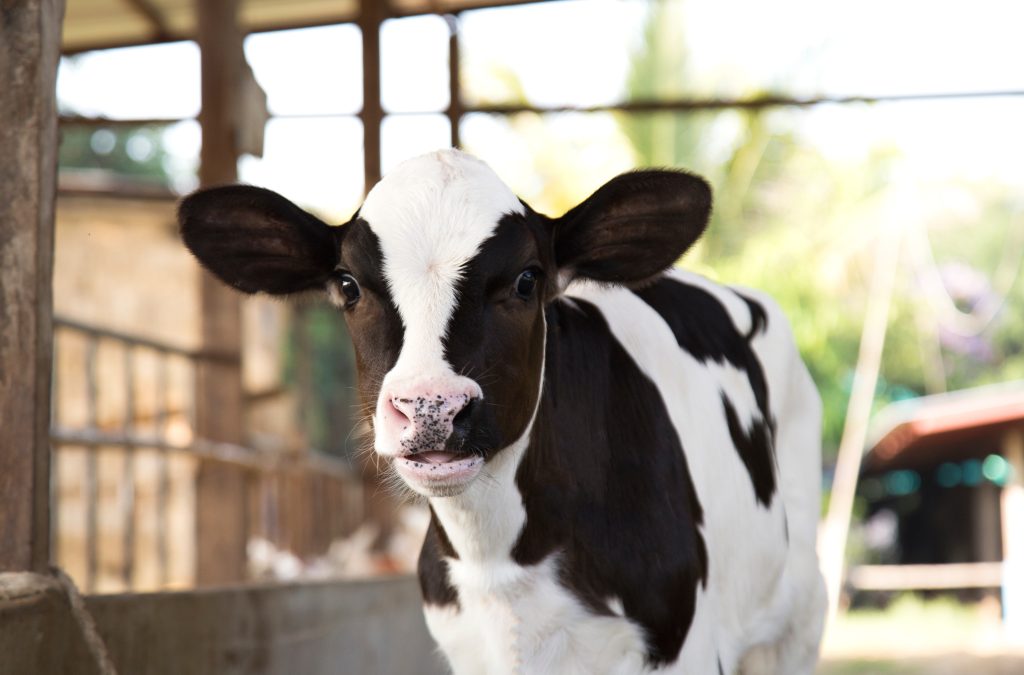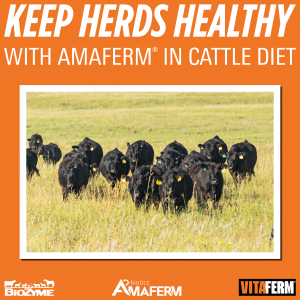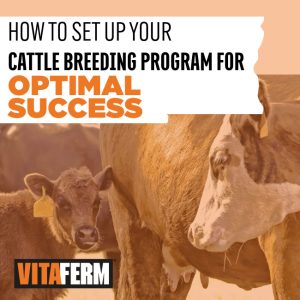
Life doesn’t always go as planned. If you are a parent, you know that kids don’t come with instruction manuals. And as a cow-calf producer, you know that some cows that have just calved don’t have that inherent maternal instinct. Now, what?
The newborn calf care is vital in those first 24 to 48 hours. When a beef cow rejects her newborn calf, it’s crucial to ensure it receives the care it needs to survive and thrive – dried, warmed up and given colostrum.
At BioZyme®, makers of VitaFerm®, we don’t just talk the talk; we’re in the trenches every day, taking care of our cow herds. We know what it is like to have a stubborn first-calf heifer unsure of raising a new calf. That’s why we made this step-by-step guide for providing proper calf care.
Give the Calf Colostrum ASAP
Colostrum, or the cow’s first milk, is essential in the first 2–4 hours of life. It provides antibodies, energy and nutrients. Offer about 10% of the calf’s body weight in the first 12 hours, or about 4 quarts for a 90-lb calf. For best results, milk the mama cow, if she will let you, and feed the calf her colostrum. If that is not an option, use colostrum replacers or frozen colostrum from another cow.
“Colostrum is the best protection for a newborn calf’s health, as it passes antibodies from the cow to her offspring,” said Chris Cassady, Ph.D., Director of Beef Technical Sales for BioZyme. “However you get it to the calf, be sure to give it at least two doses within the first 24 hours of its life to ensure it gets the best start possible.”
Keep the Calf Warm and Dry
An essential part of calf care is ensuring the calf is protected from the elements. Especially if the calf is born in the open or out in the wind, they will need shelter. Dry the calf off if it’s wet. Use heat lamps or calf jackets if it’s cold. Keeping it warm and dry will help prevent further health challenges.
Give it a Sure Start
Once the calf receives colostrum and is warm and dry, you can give it a dose of VitaFerm® Sure Start Gel. This gel is specifically formulated for calves and supports immune function and overall health during the critical post-birth period. It contains AO-Biotics® Amaferm®, a prebiotic research-proven to support digestibility by stimulating beneficial microbes and provides nutritional support to maximize calf vigor. Finally, this gel delivers IgY antibodies derived from Salmonella, E. coli, bovine rotavirus, bovine coronavirus, Cryptosporidium, and Clostridium and MOS for broad support of the immune system.
Evaluate the Calf’s Health
Giving your newborn calf its first check-up fairly early in life is essential, especially since it doesn’t have a mother to nudge it at feeding time or clean it.
Check for:
- Breathing issues
- Weak suckling reflex
- Cold ears/mouth (indicates chilling or poor circulation)
If anything seems off, contact a veterinarian—especially if the calf is too weak to stand or eat. We always recommend building a solid relationship with your veterinarian. They know you, your herd and your environment and can help you develop a treatment protocol.
Try to Reintroduce the Calf to the Cow
Sometimes, rejection is temporary. Hopefully this is the case if you have a cow that doesn’t want to mother her calf. Cows can reject their progeny for a couple of reasons.
First, they might not be mentally prepared to be mothers. Believe it or not, some cows simply aren’t ready yet. Perhaps, the oxytocin or milk let-down hasn’t occurred yet. To resolve this issue, restrain the cow in a chute while the calf nurses. Tie back one leg, so she doesn’t kick. If the calf nurses successfully, keep the cow and calf penned together as long as the cow doesn’t hurt the calf, and see if the calf nurses. If she still isn’t allowing it to nurse, you might need to put it back into the chute several times a day.
Perhaps the calf was coming breach, and calving was assisted. Maybe your scent or another scent was marked on the calf, and the cow doesn’t recognize it. Rub the calf with the cow’s afterbirth or manure to disguise its scent. Also, put the same scent in and around the cow’s nose, so she will go to the calf’s scent.
If the cow is aggressive or continues rejecting her calf, move to bottle or bucket feeding.
Bottle or Bucket Feed If Needed
If reintroduction fails, you’ll need to raise the calf as a bottle calf. This kind of calf care is a labor of love and will take time, as you might imagine. Often, parents of younger children look for bucket calves as a way to introduce their kids to caring for animals. Bottle or bucket-raised calves will need fed milk replacer at least 2–3 quarts, 2–3 times daily (depending on calf size). Always read and follow feeding guidelines on the milk replacer bag.
- Clean all bottles/buckets thoroughly.
- Start calf starter feed around 1–2 weeks of age.
- Ensure constant access to clean water.
- Keep the calf’s area clean and dry. Dip the navel in iodine to prevent infection.
Early Weaning is Part of Calf Care
Bucket calves can typically be weaned from milk at around 6–8 weeks, depending on growth. Make sure the calf is eating at least 1.5 to 2 pounds of grain daily before weaning them so they are still getting adequate nutrition.
VitaFerm Can Help
Yes, sometimes the best plans don’t always go as intended. When we just want our cows to calve, nurse and raise a calf, sometimes, they are not ready to do that. That’s why we should always have a backup plan. Whether your cows raise their calves or not, make VitaFerm Sure Start Gel part of your calf care plan to give every calf the healthiest start possible.
Get your VitaFerm Sure Start Gel today. VitaFerm Sure Start Gel is available from an authorized BioZyme dealer near you.
If you prefer to have this shipped to your doorstep, consider shopping online.
Want to learn more about other VitaFerm products and BioZyme family of brands? Sign up for our electronic newsletter to stay in the know!


